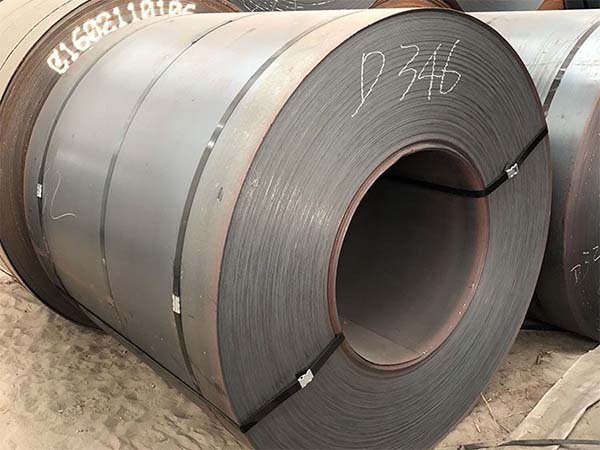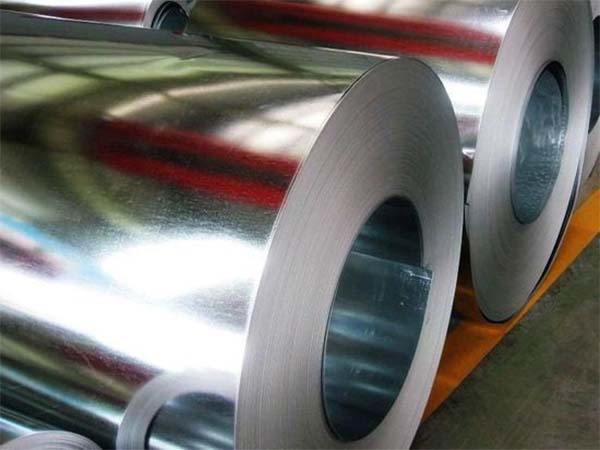Hot-rolled steel and
cold-rolled steel are the two most common processing methods. Although they differ by only one character, they have obvious distinctions in production processes, performance and application fields. Below, I will take you through the relevant knowledge of hot-rolled steel and cold-rolled steel to help you understand the differences between cold-rolled and hot-rolled steel.
What is hot-rolled steel?
Hot-rolled steel is a type of steel produced by heating billets (such as continuous casting slabs) to over 1000℃ (above the recrystallization temperature) and then rolling them through roughing and finishing rolling mills. Steel has good plasticity at high temperatures and is easy to form. After rolling is completed, the steel is cooled at room temperature.

What is the production process of hot-rolled steel?
Its production process includes ironmaking → steelmaking → continuous casting → heating → rolling → cooling → finishing (head and tail cutting, edge cutting, straightening, etc.). Straight hair coils often have defects such as tongue-shaped/fish-tail-shaped heads and tails, and wavy edges, which require subsequent finishing treatment.
What are the characteristics of hot-rolled steel?
Hot-rolled steel, after high-temperature rolling, has more uniform grain orientation, good toughness (elongation ≥20%), strong ductility (can withstand large deformations without cracking), and better welding performance (bubbles and cracks are easy to weld at high temperatures). The surface is relatively rough, with an oxide scale on it. It has a low cost and is highly economical.
What is cold-rolled steel?
Cold-rolled steel is usually made from hot-rolled steel. First, it undergoes pickling to remove the surface oxide scale, and then enters a cold continuous rolling mill for rolling (at room temperature or below the recrystallization temperature). The finished product is a hard-rolled coil (cold work hardening occurs due to cold deformation, resulting in an increase in strength and hardness). Hard rolled coils need to undergo continuous annealing (CAPL) or bell furnace annealing to eliminate cold work hardening and rolling stress and achieve standard mechanical properties.

How is cold-rolled steel produced?
Cold-rolled steel is made from hot-rolled steel through processes such as pickling, cold rolling, annealing, leveling, and finishing (trimming and oiling).
What are the characteristics of cold-rolled steel?
Cold-rolled steel, due to work hardening (cold deformation leads to grain refinement and increased dislocation density), has a higher yield strength (usually 10%-30% higher than hot-rolled steel) and hardness (for example, HRB hardness can be 5-10 units higher), but its toughness and ductility decrease (brittle fracture is prone to occur). The surface is smooth and flat, presenting the natural color of metal, with high dimensional accuracy and good appearance quality, but the cost is higher than that of hot-rolled steel.
The difference between the two processing methods
The main difference between cold rolling and hot rolling processing methods is:
1. Production process: Hot-rolled steel is rolled at high temperatures (>1000℃), while cold-rolled steel is rolled at room temperature or recrystallization temperature.
2. Surface quality: The surface of hot-rolled steel is rough and accompanied by oxide scale, while that of cold-rolled steel is smooth and flat, with better surface quality.
3. Dimensional accuracy: The dimensional accuracy of hot-rolled steel is average, while cold-rolled steel has high precision.
4. Mechanical properties: Hot-rolled steel has good plasticity and medium strength. Cold-rolled steel, due to work hardening, has higher strength and hardness, but its toughness and ductility decline.
5. Cost: The production process of hot-rolled steel is relatively simple and requires lower costs, while the production process of cold-rolled steel is more complex, requiring higher equipment standards and incurring relatively higher production costs.
6. Application fields: Hot-rolled steel is mainly used for large structural components such as building structures, sections, and pipes, while cold-rolled steel is mainly used for precision parts, such as car bodies, household appliances, and precision instruments.
Frequently Asked Questions and Answers
Can hot-rolled steel replace cold-rolled steel?
In situations where surface quality and dimensional accuracy are not highly demanded, hot-rolled steel can be used instead of cold-rolled steel. However, in applications with strict appearance requirements such as automotive panels and home appliance casings, cold-rolled steel must be used.
Is cold-rolled steel always better than hot-rolled steel?
Not necessarily. Cold-rolled steel is superior in precision and strength, but it has poor plasticity and is more expensive. Hot-rolled steel is more suitable for large items, structural components and other projects with high requirements for cost and processability
Will hot-rolled steel rust?
Yes. Hot-rolled steel has an oxide scale on its surface. If it is exposed to air and moisture for a long time, it is prone to rust. Usually, additional anti-rust treatment (such as painting, galvanizing, etc.) is required.
Read more : What is hot rolling process

